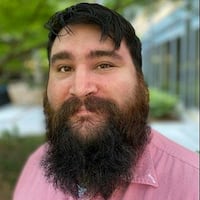UC Davis Health advanced practice nurse Alyssa Shannon has been selected by NASA to take part in a yearlong mission that will simulate living on Mars. Shannon will be one of four crew members on her team, which will be accompanied by two separate teams.
“Three different crews will be selected to live in Mars Dune Alpha for one-year missions,” NASA reported. “Each crew will include four individuals and two alternates. The analog missions will provide valuable insights and information to assess NASA’s space food system as well as physical and behavioral health and performance outcomes for future space missions. Research from Mars Dune Alpha habitat will be used by NASA to inform risk and resource trades to support crew health and performance while living on Mars during an extended duration mission.”
The Sacramento-based health care hero is up for the task.
“Research gained during the CHAPEA mission will be used by NASA to inform risk and resource trades to best support crew health and performance while living on Mars,” Shannon told UC Davis Health. “This research will provide their experts with valuable information that will help future Mars missions succeed.”
Mission one, featuring Kelly Haston, Ross Brockwell, Nathan Jones, Alyssa Shannon, and alternates Trevor Clark and Anca Selariu, is scheduled for the summer of 2023.
“Mission 1 will be the first of three one-year simulated Mars missions,” NASA reported. “The overarching goal of the mission is to assess human health and performance in relation to Mars relevant resource limitations in isolation and confinement. To collect sufficient data, the crew members will live and work in a simulated Mars habitat at NASA’s Johnson Space Center in Houston, Texas, complete with communication delays and environmental stressors. The crew will also participate in various activities, including crop growth, simulated spacewalks, habitat maintenance, and science experiments.”
Shannon will be utilizing her APRN experience with interventional cardiology and cardiothoracic surgery to aid the mission.
“As science officer, I will be working in a small lab in a resource-restricted environment,” Shannon said. “I will have to navigate communication challenges, including time delay communication with NASA and equipment failures that astronauts might experience on Mars.”
Shannon will leave for Houston to begin training for the mission May 24, and she will not return until July 2024.
“The time away will be hard, but the bigger mission is being able to help provide this invaluable research for space travel,” she said. “In the future when humans actually land on Mars it will be so fulfilling to know that I played a small role in helping us get there.”
About the Author
Keep Reading
The Latest
Featured


